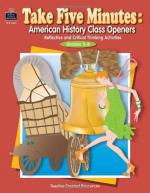|
This section contains 1,109 words (approx. 4 pages at 300 words per page) |

|
The Minstrel Legacy.
As early as the 1700s, white actors —their faces smeared with burnt cork—took to the stage in "blackface" to portray African Americans. By the 1830s such portrayals had evolved into a staple form of entertainment at the circus or between acts at the theater, with song and dance augmenting display. By the next decade the first full-length "minstrel shows" had taken shape. These extravaganzas, featuring broad comedy, elaborate dress, and plaintive singing, represented (or misrepresented) black folkways for white audiences. The sentimental plantation ballads of white composer Stephen Foster (1826-1864)—including "Old Folks at Home" (1851), "Massa's in de Cold Ground" (1852),"My Old Kentucky Home" (1853), and "Old Black Joe" (1860)—helped make the minstrel show the dominant form of public entertainment in the United States at midcentury.
African American Variations.
Success rendered the minstrel formula largely inviolable. Thus, when...
|
This section contains 1,109 words (approx. 4 pages at 300 words per page) |

|




